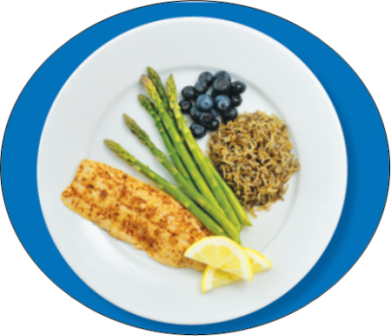Fish Consumption
- Fish Consumption Home
- Waterbody-specific and Statewide Guidelines
- Contaminants and Minnesota Fish
- Order Fish Consumption Materials
- Eating Fish: Benefits and Serving Size
- Resources, Reports & Technical Information
- Great Lakes Consortium
- Information in Other Languages
Related Topics
Environmental Health Division
Contact Info
Fish Consumption Guidance
Minnesota fish consumption guidance is updated periodically. Check back regularly.
Last guidance update: April 2025

The Fish Consumption Guidance program at MDH, working alongside other state agencies, reviews scientific information and contaminant data for Minnesota waterbodies regularly and issues updated guidance as necessary. The most studied contaminants in Minnesota fish include mercury, polychlorinated biphenyls (PCBs), and per-and polyfluoroalkyl substances (PFAS).
Fish are an important part of a nutritious, well-balanced diet and part of many Minnesotan traditions and cultures. MDH’s fish consumption guidance is intended to provide Minnesotans with the information they need to make informed choices for the health and safety of their family.
Minnesota fish consumption guidelines depend on the fish you eat and who you are. People who are pregnant, planning to be pregnant, and children need to be more careful about what kinds of fish to eat and how often to eat fish, as they are more sensitive to contaminants.
April 2025 update: Fish Consumption Guidance Updates for Some Waterbodies in 10 Minnesota Counties
Updated Fish Consumption Guidelines for PFAS found in some MN waterbodies.
- Hmong: Cov Lus Taw Qhia Kho Tshiab Rau Kev Noj Ntses hauv qee lub pas dej ntawm 10 lub county hauv Minnesota (PDF)
- Spanish: Actualización de la Guía para el Consumo de Pescado para las masas de agua de 10 condados de Minnesota (PDF)
Register for the Thursday, April 24th, 2025, webinar to learn more.
Fish consumption guidelines for Minnesota rivers and Lake Superior.
Fish consumption guidelines for Minnesota lakes can be found in Lakefinder. (Updated: April 2025)
 Eating Fish: Benefits and Serving Sizes
Eating Fish: Benefits and Serving SizesBenefits of eating fish, choosing fish to eat, and fish serving sizes.
Fish Consumption Information in Other Languages
2025 Minnesota Statewide Fish Consumption Guidelines
- Minnesota fishing regulations (PDF) (English)
- Cov cai nuv ntses hauv lav Minnesota (PDF) (Hmong)
- မံၣ်နံၣ်စိထၣ် တၢ်တခွဲညၣ် တၢ်သိၣ်တၢ်သီတၢ်ဘျၢ (PDF) (Karen)
- Sharciyada kalluumeysiga ee Minnesota (PDF) (Somali)
- Regulaciones de pesca de Minnesota (PDF) (Spanish)
Spanish

English version: Eat Fish often (PDF)
ELIJA SU PESCADO - RECOMENDACIONES PARA MUJERES Y NIÑOS (PDF)
English version: Choose Your Fish – Recommendations for Women & Children (PDF)
Hmong

English version: Eat Fish often (PDF)
Xaiv kev noj qab nyob zoo, noj tej ntses uas muaj cov kua hlau nyaum tsawg (low mercury) (PDF)
English version: Choose health, low mercury fish (PDF)
"Talk about Fish and Way of Eating Fish"
Produced by Foung Heu, Filmmaker
Narrated by John Ny Vang, Executive Director of the Capitol Sportsmen Chapter of the Minnesota Deer Hunters Association
- Hmong Video: Talk about Fish and Way of Eating Fish
- Script in English for "Talk about Fish and Way of Eating Fish" (PDF)
Shorter segments of Hmong Video: "Talk about Fish and Way of Eating Fish"

